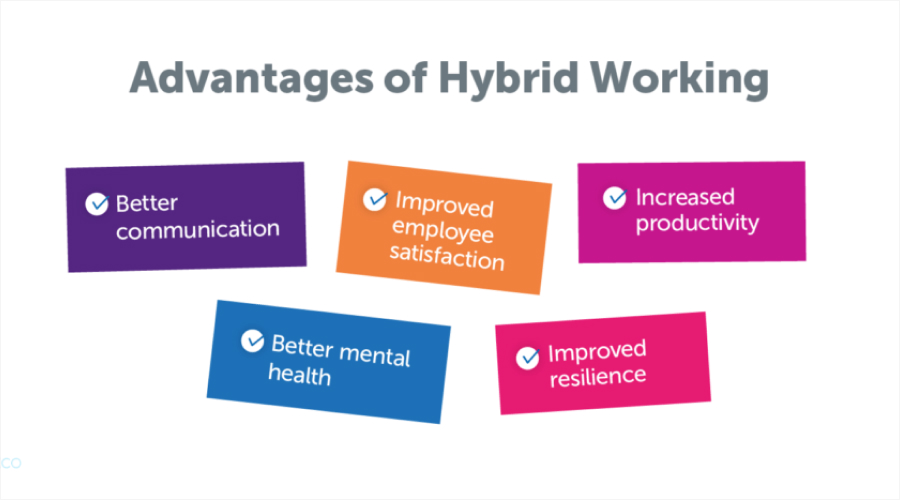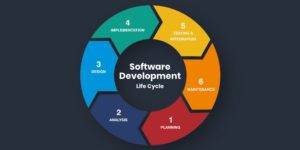
What comes to mind when you read these two terms, onsite and offshore? You might have heard of these terms numerous times. Some of you might be familiar with their basic meanings.
However, do you know an onsite software development model, offshore development model and onsite-offshore development model in detail? Possibly not. The software development cycle is a complex and evolving process. Therefore, it requires the assistance of different team members specialized in various domains. Doing so ensures the project’s development is based on cutting-edge tools from start to finish.
However, recruiting a diversified team has its own challenges, including different cultures, languages, beliefs and time zones. Read this comprehensive guide! here, we will discuss what the onsite software development model, offshore development model and onsite-offshore development model are and how they work. So, let’s get started….
What Is An Onsite Model?
The onsite model, also known as the onshore model, refers to a way of software development in which outsourcing or third-party companies send their most knowledgeable and qualified employees to the client. Typically, clients hire them to work on a project at their location based on their requirements. Both third-party vendors and clients belong to the same country. This way, outsourcing companies provide skilled employees to other clients and help them accelerate their productivity
Essentially, this kind of model is ideal for projects that are complex in nature and constantly evolving. The vendor’s employees establish robust relationships with the client’s team, ensuring optimal outcomes. Their face-to-face interaction fosters a positive work environment and helps streamline the project’s complexities. In some cases, they are hired to work from the vendor’s office. They utilize cutting-edge tools that aid them in maintaining real-time collaboration with the client’s project team.
Generally, the tasks performed in this model include software designing, coding, testing, project management and requirement analysis. More often than not, these tasks necessitate ongoing and tedious updates due to the continuous evolution of their specifications and requirements. This way, the vendor’s external team meets the client’s project requirements and accomplishes their roles and responsibilities within a specific timeframe and limited budget.
Let’s understand the onsite model with an example:
Let’s say there is an outsourcing company in Florida with expert software testers, while there is a company located in Orlando looking for testers. Now, this is a win-win situation for both the client and the outsourcing company. In this scenario, these two can collaborate. Here, the vendor’s external team has two options – the first is to work from the client’s location and collaborate with the team members, while the second is to join the team online. Both ways are effective and ensure the utmost productivity level of the team.
➢ Roles and Responsibilities Performed by the Onsite Team
The most common roles and responsibilities performed by the onsite team include:
- Designating a liaison to facilitate communication between the client and the offshore team members.
- Understanding the client’s requirements to plan and design the product.
- Establishing a robust collaboration with the client’s team to ensure the software is developed and delivered according to the specifications and requirements.
- Testing whether or not the software development is error-free or without bugs, preventing last-minute revisions. This way, the onsite team saves time, cost and energy.
➢ Advantages of Using the Onsite Model
The onsite model offers numerous advantages, including cost savings. However, in most cases, clients use the onsite model when they need to hire employees who are experts in a new technology. Some popular advantages of the onsite model are:
- Small Projects: The onsite model is ideal for small projects that lack specified requirements. The onsite team members efficiently comprehend the changed requirements of the small project.
- Face-to-face Communication: They constantly test the software development cycle to identify and troubleshoot bugs and errors in the source code before the final product is launched in the market.
- Faster Response Time: The vendor’s external team uses its expertise for better quality control. Therefore, team members remain highly responsive and approachable.
- Effective Team Collaboration: Onsite team members build stronger relationships and foster a culture of teamwork, preventing zero risk of misunderstanding or conflicts.
- Timely Adjustment: The vendor’s team members ensure no communication gap between them and the client. As a result, they make timely adjustments to the product, making sure better project outcomes.
- Faster Delivery in the Market: They reduce the risk of project delays or failures by detecting bugs or errors on time, ensuring the software’s faster delivery.
- High-quality Software: They are hired to deliver high-quality software solutions based on cutting-edge technologies and the client’s expectations, ensuring minimal risk and maximum collaboration.
- Budget-Friendly Approach: This allows clients or companies to save their resources, especially monetary resources, by hiring onsite team members, as it prevents them from hiring permanent employees for short projects.
Undoubtedly, onsite model offers excellent benefits; however, there are certain drawbacks as well, which we have outlined in the next section. Read on!
➢ Disadvantages of Using the Onsite Model
Here are some of the disadvantages of onsite model; take a look…
- Increased Utility Cost: Clients need to arrange for a fully furnished physical space where they can accommodate all their employees, including the ones they hire for specific project. This increases their utility cost. Additionally, they need make arrangements for stationery, IT hardware, and refreshments, which again adds to the overall cost.
- Additional Expenses: Aside from office expenses, hiring and training staff is yet another cost associated with onsite model. Managing these expenses can be difficult for firms on tight budget.
- Less Flexibility: Working onsite may offer less flexibility, especially in terms of working hours and breaks because even project-based employees need to work in accordance with the company’s policies.
- Increased Stress: Onsite employees may experience stress due to the watchful eye from senior managers observing their work. This can lead to a notable decrease in their productivity and ability to work.
- Commuting: Commuting is yet another issue with onsite model. It can be stressful, time-consuming, and costly if the distance between work place and residence is huge.
Let’s now understand what the offshore model is and its benefits. Here we go…
What Is An Offshore Model?
The offshore model or offshoring is the process of hiring a team of software developers from different geographical regions. In this model, companies outsource developers from other countries to get their software developed or work on specific technical details of the project. Companies usually hire technical experts or offshore engineers from other countries when they lack the specific knowledge required for developing software or handling a project.
Aside from that, this allows organizations to save a lot of money as it eliminates the need to hire in-house employees. Offshore software engineers possess specialized skills and experience, which makes them the preferred choice for organizations looking for the expertise required for their projects. The offshore software development team can work globally from anywhere, provided they have better communication skills, specialized knowledge and experience.
The offshore software development team can perform activities in two ways- a company’s subsidiary in another country or an outsourcing company that provides offshore services to the clients. An example of the offshore model is Tesla. Tesla outsources its business processes to developing countries. The best thing about offshore outsourcing is that it is the more cost-effective and transformative solution. This is ideal for various tasks such as web designing, graphic designing, content writing, digital marketing and search engine optimization.
This way, the company can access a larger talent pool and resources at a lower cost than the workforce and resources in the parent country. Hiring in-house employees turns out to be an expensive affair for most organizations, especially if they need special expertise for a brief time or only for a few projects. Hiring in-house employees leads to an increase in expenses, including health insurance, workers’ compensation, transportation, maintenance and more.
The offshore model lacks face-to-face interaction with the client’s team members. However, it is the best solution. There are many tools and techniques, like video calls, emails, messages, etc., that they can leverage to comprehend the client’s requirements, leading to well-structured software development.
➢ Roles and Responsibilities Performed by the Offshore Team
The offshore software development team is known to perform the following roles and responsibilities:
- Connect with the onsite team to comprehend the planning and design of the software.
- Comprehend the client’s requirements and gather the information from the onsite team.
- Coordinate with the client, in-house employees and onsite team to achieve the project’s objectives, ensuring zero risk.
- Share the updates with the in-house team.
➢ Advantages of Using the Offshore Model
When done right, the offshore model can be revolutionary for a company. Here are the advantages of opting for an Offshore model! take a look…
- Less Expensive: The main advantage of using the offshore model is that it is less expensive than the onsite model due to the lower cost of living in developing countries.
- High-Quality Solutions: Companies often get high-quality software solutions from the offshore development team at an affordable cost. This is because most developing nations boast highly expert and experienced software developers who are ready to deliver outstanding work at minimal cost.
- Innovative Approach: Since offshore developers belong to different cultures, they may see the problem from another perspective. Their new approach can bring innovative and creative changes in the product that nobody has ever expected.
- Around-the-Clock Support: By coordinating with offshore team members, the companies can ensure business operations in multiple time zones. This, in turn, ensures around the clock support.
- No Hidden Charges: The company can ask for a fair and transparent cost estimate from offshore employees, ensuring no hidden charges involved.
- Streamlined Work Operations: By fostering teamwork, the company can ensure a positive work environment between the local team and offshore developers.
➢ Disadvantages of Using the Offshore Model
Now that you have understood the advantages of the offshore model, its disadvantages may outweigh the benefits. Read ahead to understand its downsides:
- Communication Barrier: Since offshore team members belong to different countries, understanding languages or communicating with them in different time zones can be a barrier. This can result in project delays or misunderstandings in the development cycle.
- Cultural Differences: Their cultural differences may cause conflicts or disagreements while developing the product.
To overcome the challenges, the company must open all lines of communication between the local team and the offshore developers. Clear and transparent communication will help set realistic goals and understand the significance of collaboration. The company should foster an environment of cooperation and trust between them, ensuring everyone is on the same page until the project is released.
So, this is about onsite and offshore models. Then, there is a hybrid model, which is a combination of onsite and offshore models. Let’s now understand it in detail. Here we go…
What Is the Onsite and Offshore Hybrid Model?
Hybrid software development, as the name says, is the combination of onsite and offshore models. This model is highly efficient for long-term and complicated IT projects. The combination of onshore and offshore models ensures the best delivery of products or services.
In this model, the third-party vendor or outsourcing company can belong to the same place or any other country. The task is divided between the onsite and offsite teams based on discussion. This way, the company can enjoy the benefits of the offshore developers while addressing the queries and concerns of the onsite team.
This kind of software development model allows top management to save a lot of time as it eliminates the need to manage a huge workforce. Additionally, it allows top management personnel to focus on their core tasks without worrying about software development.
Two teams working together bring the best possibilities to the project. The onsite team performs quality control checks, software designing, planning and project management. Conversely, the offshore team performs coding, testing, etc.
➢ Roles and Responsibilities Performed by the Hybrid Team
The hybrid team is accountable for performing the following roles and responsibilities:
- Coordinate with each other to find the flaws or bugs and fix them.
- Offshore and onsite developers ensure the project is accomplished according to the client’s specifications within pre-determined resources.
- They both are accountable for producing high-quality products.
- Effective communication between teams is critical to ensure the optimal results.
➢ Advantages of Using the Hybrid Model

A hybrid model is advantageous to many organizations, especially the ones with long-term projects. In the hybrid model, project coordinators play a crucial role because they eliminate the gap between the onsite and offshore teams. For this, they foster real-time communication and mutual cooperation. Take a look at the following pointers to comprehend the benefits of using the hybrid model:
- Full Utilization of Resources: The hybrid model ensures full utilization of resources because both the onsite and offsite team members perform their activities in different time zones.
- Long-Term Projects: It is beneficial for complicated and long-term projects because it allows organizations to have a team of different software developers specialized in varied domains of project development.
- Saves Time: It saves clients’ time because offshore service providers efficiently administer the onsite developers.
- Less Resource Intensive: Organizations are not required to hire a full-fledged team of software developers or experts to create the product.
- Affordable Solution: Since it combines both the onsite and the offshore model, clients have the privilege of hiring software developers from developing countries where the cost of living is more affordable than the company’s parent country. This, in turn, helps them save money.
- Broader Talent Pool: The company can leverage a broader talent pool by opting for the onsite and offshore development team model. As a result, they can avail of skilled and experienced developers from different countries and cultures to bring innovative changes.
- Problem-Solving: Diversity in the team can help organizations. Having a diversified team allows them to see problems from different perspectives, ensuring better decision-making and problem-solving.
- Flexible and Scalable: The onsite and offshore team model is flexible and scalable to meet the objectives. The company can scale the team based on the project’s requirements.
- Accelerate Productivity: The company can partner with the offshore team members to maximize productivity and reduce costs.
Also Read: How To Do Software Outsourcing
Wrapping It Up
So, this is all about the onsite and offshore software development model. Both models offer unique advantages for businesses looking to optimize their operations and project delivery. The onsite model ensures close collaboration, faster communication and a deeper understanding of project requirements, making it ideal for tasks requiring immediate attention or specialized expertise.
On the other hand, the offshore model provides cost-effective solutions, access to global talent and scalability, making it an excellent choice for businesses wishing to develop quality products within budget. It is vital to choose the right model for your project to ensure success and optimal results. By carefully assessing project needs, budget constraints and organizational goals, you can make an informed decision and choose the right approach to achieve the best results.
Thanks for reading!






